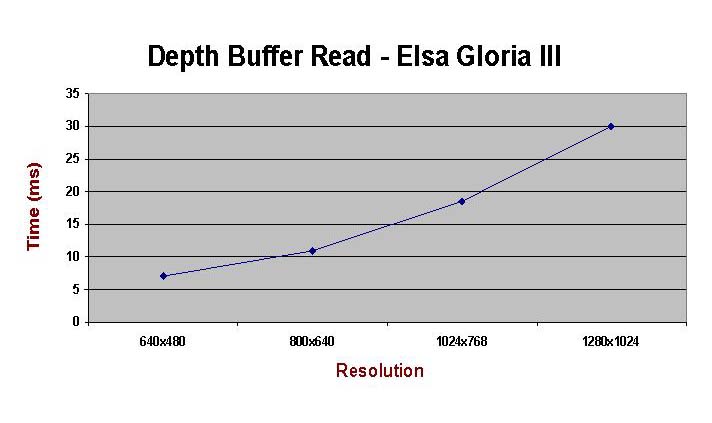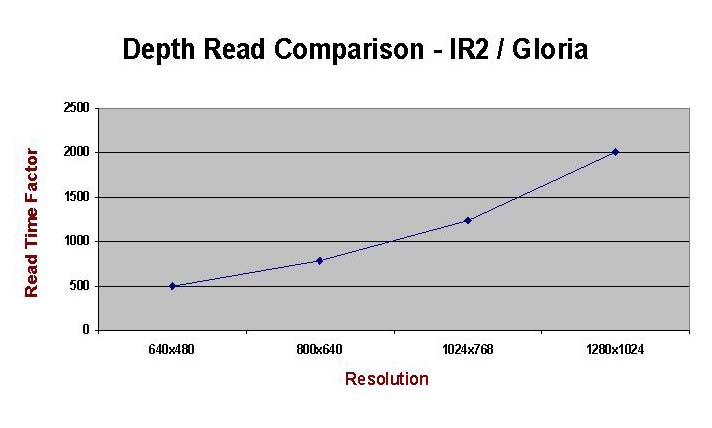Here are the results of some tests to compare read times of the frame and depth buffers for the Infinite Reality (IR2) and the Elsa Gloria III card which is used in our cluster.
The test program used was a simple animating ball written using GLUT. The final results have been averaged for 100 readings and are plotted over the supported display resolutions.
The graph above shows time taken to read RGBA data from the framebuffer with varying resolutions. The results are pretty comparable across both cases.

The graph above shows only the times taken to read the Z-buffer for the Elsa Gloria III card. For this case, the results obtained from the IR2 were in the order of microseconds(14 micro secs!) and so have not been incorporated above. Furthermore, the read time was constant over the different resolutions. It thus seems more insightful to visualize the factor by which the IR2 leads in the depth reads. This is what the graph below shows. As expected, the read time factor increases with the resolution.

The following tests compare the read times for the the nVidia Quadro (caligari) under NT and Linux. Interestingly, the Linux drivers were much faster at pixel operations than the NT ones.